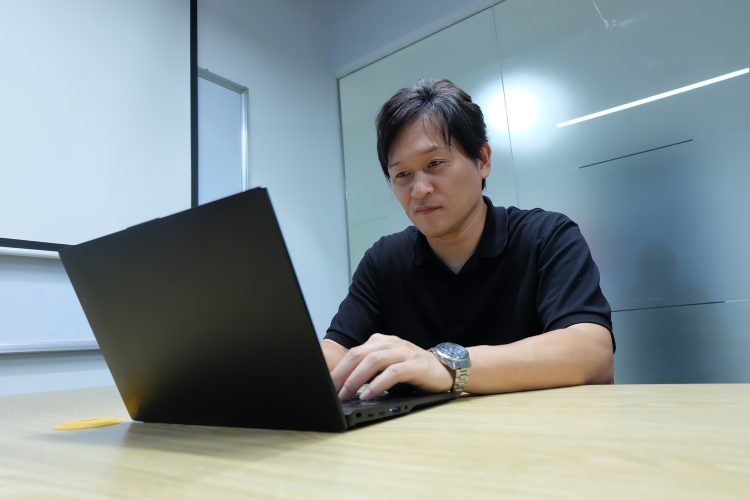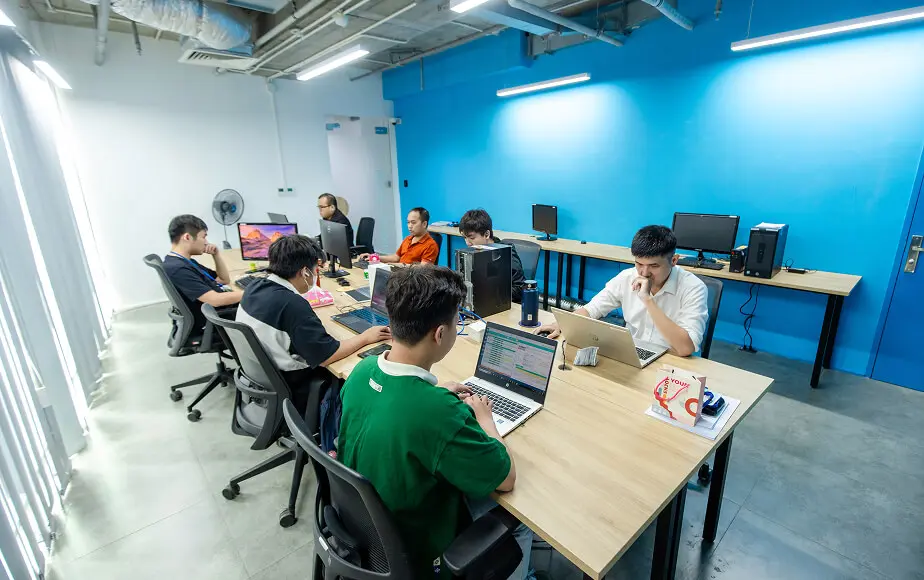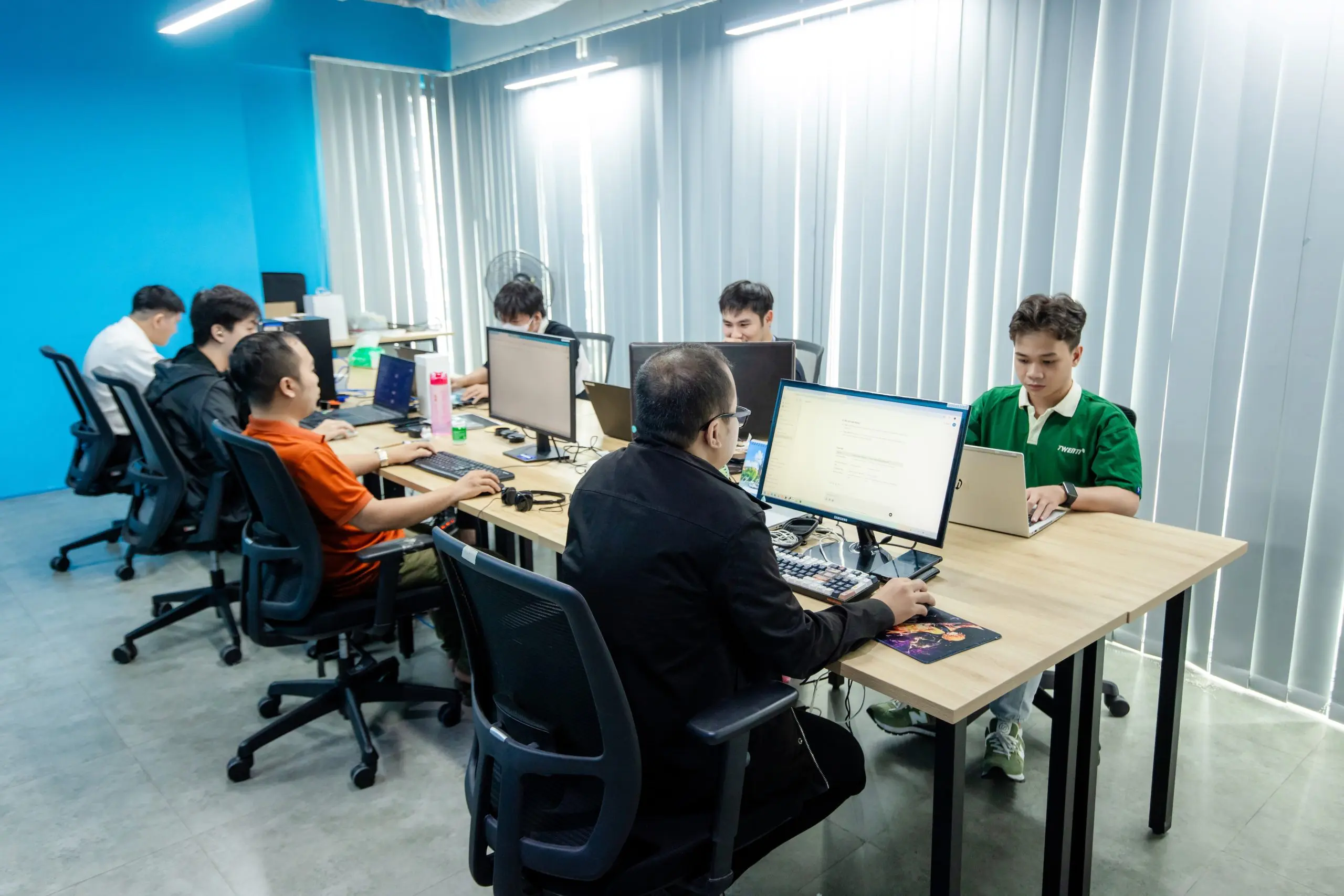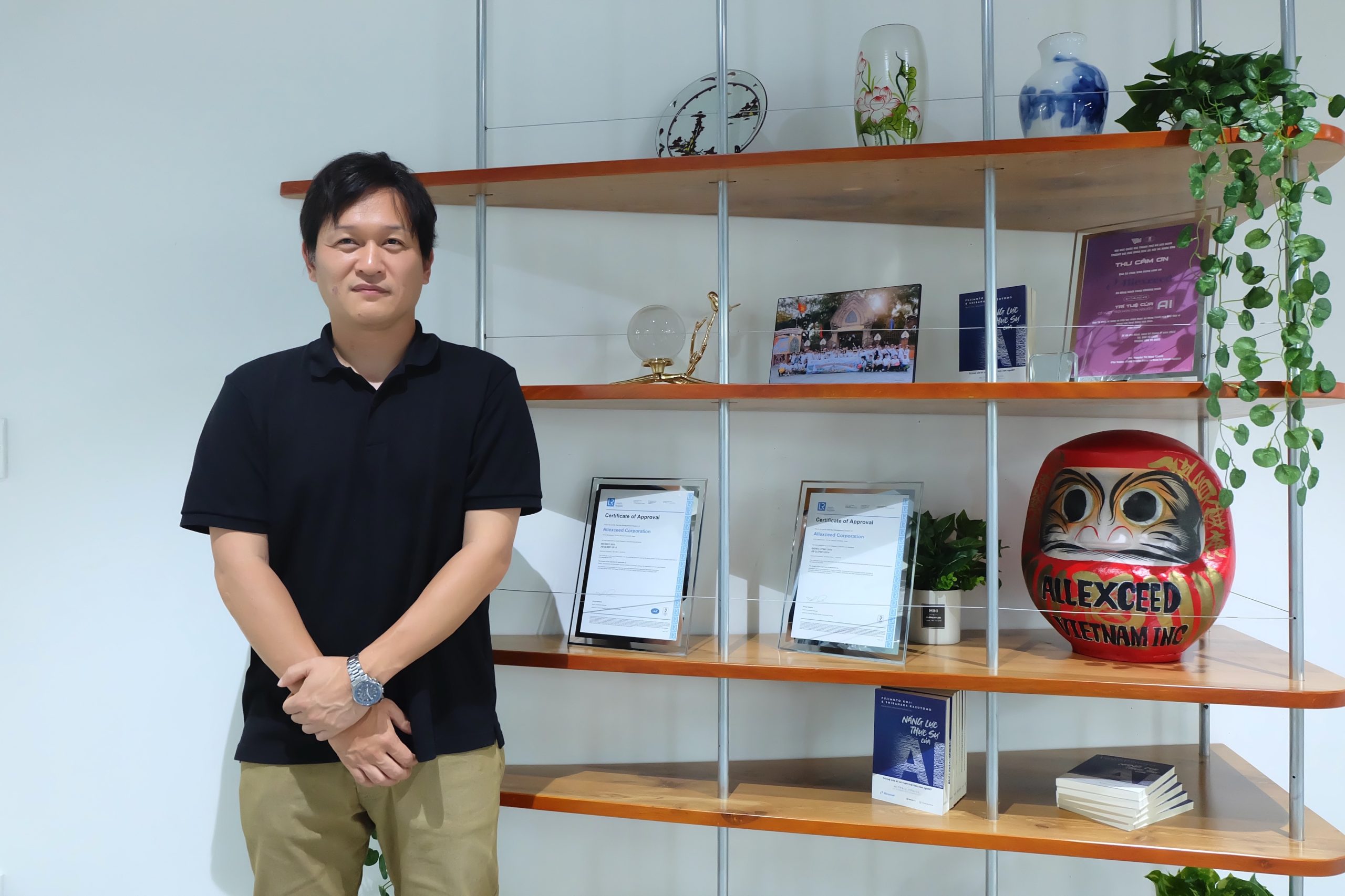2025/04/22
Share
"Why Not Give It a Try?" Offshore Development Work Through Communication (Part 2)

In Part 1, we asked Mr. Nakai about the actual development methods and projects with Allexceed Vietnam.
In this part, we will delve into the differences between developing in Japan versus offshore, and his thoughts on Allexceed Vietnam’s offshore development in general.

Offshore Development Inserts a “Development Phase” in Vietnam
From your perspective, Mr. Nakai, what do you see as the main differences between developing with in-house resources versus offshore development with Allexceed Vietnam?
The most obvious difference is, of course, language.
In domestic development, small details can often be conveyed quickly through verbal communication. With offshore development, however, you need to go through translation or interpretation. That requires a bit more ingenuity in how you communicate.
Also, when we develop entirely in-house, the process flows as a single stream from start to delivery. With offshore development, the process is split into two stages because the “development phase” in Vietnam is inserted in the middle.
To be honest, if you compare purely on development speed, there are moments when domestic development feels faster.
However, I think this impression is partly because our company has a solid team of engineers in-house, an environment where we can prioritize and respond with speed.
That said, within our long-term relationship, as we’ve come to share a common understanding of technical terms and business context, I feel that the speed has naturally improved.
Sharing the Big Picture in the Early Stages of a Project

There’s a common perception that offshore development results in lower quality. What are your thoughts on that?
I feel that the quality is at a high level now, but we have indeed faced quality-related challenges in the past and have taken measures to address them.
For the long term, we conduct thorough reviews whenever quality issues arise as part of our business process improvement. For short-term measures, we’ve adopted a style of first preparing clear instruction documents tailored to the specifics of each project when making a development request.
However, simply conveying specifications can lead to misunderstandings if the background and purpose aren’t communicated. That’s why, in the initial stages of a project, we make sure to properly share the big picture, such as “why we are building this system” and “what the background is.”
Additionally, we have a strict process where the Japanese side always confirms and verifies the delivered product before proceeding with the release to the end-user.
As a result of these various initiatives, I believe we now have a system in place where we can delegate work with confidence.
Of course, it’s difficult to make a direct comparison since we aren’t continuously developing the exact same system. But I can feel that when the team is continuously involved in the same project, they accumulate experience and their response speed gets faster and faster.
A Large Talent Pool and High Skill Levels Ultimately Lead to Speed
What do you feel are the main advantages of offshore development in Vietnam?
First and foremost, I would say it’s the cost.
Of course, labor costs in Vietnam are rising, but I think it’s still considerably cheaper compared to engineers in Japan.
Also, I feel that it has become quite difficult to hire developers and engineers in Japan right now.
In contrast, Vietnam has an abundance of IT talent, and in terms of skills, my impression is that there are many young members who have studied the field professionally at universities. In that respect, it’s a huge advantage.
We often hear that hiring IT talent has become difficult in Japan recently.
Frankly, when we recruit engineers in Japan, it’s not like a majority of new hires have majored in IT at university. Many come from non-technical backgrounds or have no prior programming experience.
In that sense, people in Vietnam generally aren’t hired unless they’ve graduated from a systems-related department at a university and possess a certain level of skill and technical ability. You could say they are ‘the chosen ones’ for system development.
That’s why I feel that having a rich pool of highly skilled talent is a clear advantage compared to developing solely in Japan.
While it’s hard to make a blanket comparison on quality, at least with your company right now, you have a solid system in place, so I have absolutely no concerns about quality.
However, I believe this is a matter of “we can trust Allexceed Vietnam,” not necessarily “the quality is good because it’s Vietnam.”
Regarding speed, while it can’t be generalized, the fact that there’s a large talent pool means there’s a high possibility that development can start immediately after we make a request. That’s a big plus.
If you try to start a new project in Japan, the developers with the necessary skills might not be available. As a result, offshore development can sometimes be faster. So, I feel there’s a practical speed advantage as well.
Of course, whether this is always achievable depends on the situation, but I think there’s a significant difference between doing everything in Japan versus utilizing an offshore company in Vietnam.
Even when it comes to skill sets or a single programming language, there might be talent in Vietnam who are proficient in a language we don’t handle on the Japanese side.
In that sense, being able to secure both a wider range of recruitment options and a broader scope of skills is a major benefit.
I believe that the abundance of talent and high skill levels ultimately translate into speed.
Some Things Can’t Be Handled by the Waterfall Model Alone

Could you share what you see as future challenges and expectations for Allexceed Vietnam?
What I see as a future challenge is balancing “speed” and “flexibility.”
The quality has improved dramatically and is highly commendable, but at the same time, we are in a situation where time and manpower are being invested to maintain that quality, which means speed is sometimes sacrificed.
While firmly ensuring quality, we would like to explore reallocating resources currently dedicated to testing over to the development side through the use of AI and other tools.
In terms of flexibility, we have historically followed a Waterfall-like approach. However, as the world shifts towards more Agile development styles, there may be aspects that a strict Waterfall model won’t be able to handle in the future.
It’s difficult to switch to Agile development overnight, so we’d like to gradually enable a more multifaceted way of working, such as omitting steps where possible or responding flexibly by prioritizing tasks.
It’s Fine to Just Give It a Try.
They Will Properly Propose How to Proceed.
What advice would you give to companies that are considering offshore development?
I believe I have a considerable amount of experience in how to proceed with outsourcing, but for companies that haven’t actually done offshore, I imagine they have no idea where to even start.
But I think it’s fine to just adopt a “let’s give it a try” mindset, regardless of that.
Allexceed Vietnam will properly propose a plan on how to move forward.
To put it in extreme terms, you could start by trying a small, one-off project. If it doesn’t work out, you can just stop. I think giving it a try once is a valid approach.
While you’re just thinking about it, time keeps passing, right?
That’s why I think the option of just trying it once is very effective.
Also, of course, there are the options of hiring Japanese engineers for your own team or relying on a Japanese vendor. But from a cost perspective, I think offshore is overwhelmingly more cost-effective.
On top of that, development in Japan really takes time to get started. You have to begin by searching for a vendor.
But the team in Vietnam moves quickly. As we mentioned earlier, that sense of speed is another advantage of offshore.
So for me, my feeling is, “Why not give offshore development a try?”
Separately, this is more about the unique enjoyment or interesting aspect of offshore, but I think there’s something simply refreshing and fun about communicating and working with people from a different culture and country.
So it’s both enjoyable and rewarding.
It’s been clear from our conversation that you put a lot of effort into communication.
Something that used to happen a lot in the past was a situation where we thought, “They must have already started development,” but in reality, no progress had been made.
For example, we would exchange comments on a tool like Redmine, but we were in a state of “I assume I’ve told them,” and they were in a state of “I wrote it, so it must have been communicated.” We ended up leaving things unconfirmed on both sides.
As a result, there were actual cases where the delivery date didn’t align with the client’s schedule, or by the time we realized, it was too late to fix.
Drawing from those experiences, we now consciously review our communication methods.
For instance, if I post a comment and don’t get a reaction, I make sure to follow up. Similarly, your engineers no longer just assume “I’ve contacted them once, so it’s OK”; they will check again if they don’t receive a reply.
We place a high value on the mutual awareness of avoiding one-way communication.
Furthermore, we also prioritize communication from the project preparation stage.
We make sure to share arrangements and schedules in advance, saying things like, “Please study this material beforehand,” “Please prepare the team assignment by this date,” or “Another project will finish on this day, so please have them join from then.”
By carefully handling such preliminary preparations and ongoing information sharing, it becomes easier to prevent problems, and I believe it allows both sides to proceed with peace of mind.
If you make the effort, I believe it can be a better development method than developing in Japan.
After all, there are many young and technically skilled engineers in Vietnam.

This has been a unique perspective from someone with many years of experience in offshore development.
We look forward to our continued collaboration.
Thank you very much for your valuable insights.




